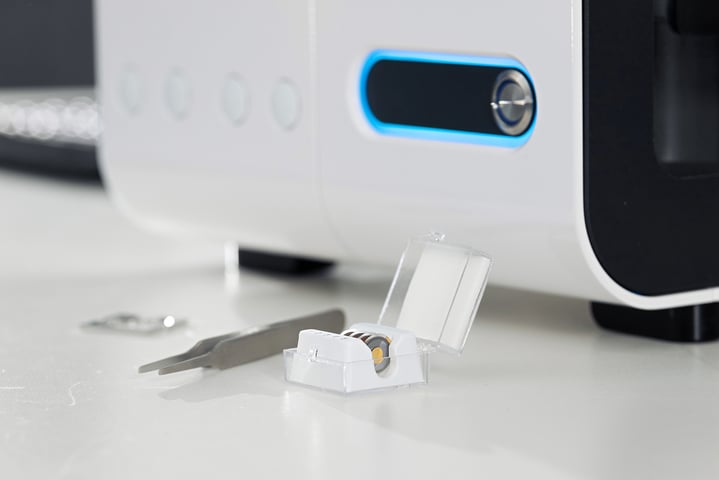
For decades QCM-D has provided key data to the scientific and research community, supporting more than 3000 publications and being a fundamental tool to develop products and processes. Investment in an advanced piece of scientific equipment such as a QCM-D instrument can be a success factor for science and innovation. But it can also be associated with challenges. Now, we introduce QSense 4th generation QCM-D platform, QSense Omni - an easy to use modular and upgradeable QCM-D instrument suite that addresses some of these investment challenges.
Since its introduction in the 1990s, the QCM-D technology has provided unique and valuable information to thousands of scientists and researchers in various industries and scientific fields. Although an attractive addition to any research lab, and in some scientific areas a must, acquisition of advanced scientific equipment can be challenging. There can be several barriers to overcome such as instrument cost and technological complexity, just to mention two common hurdles. In addition to the initial investment, there is often a need for a dedicated resource, a ‘superuser’ – an expert user with great instrument knowledge and an acquired special touch, to ensure optimized data output. There can also be uncertainties as to whether the setup will fulfill future instrumentation needs. Depending on the scientific field, or research area, and structure of the organization, the hardware configuration needs may change as the scientific field evolves, the research takes on a different direction, or the need of throughput increases. At the same time, there is a driver for research to be more and more interdisciplinary in both universities, research institutes, and in commercial laboratories [1]. This fosters cross-disciplinary thinking rather than specialization. The combination of all these factors can make it a challenge for individual research labs to acquire, run, and maintain advanced scientific instrumentation [2] such as QCM-D. Even though there is a belief that the technology may contribute significant value to the department or organization, the risks and uncertainties associated with the investment may still seem too high. As a result, the added set of eyes that the technology offers to investigate the scientific problem in question, is missed out on. Not only may this impact the pace of project progression, but it may also obliterate discoveries where existing tools are not capable to tread. In the end, research questions may be left unanswered, scientific grounds will remain unexplored, and promising development opportunities will be lost.
Being pioneers and inventors of the QCM-D technology, our ambition is to provide instrumentation that enables scientists to unfold new insights and to push the boundaries of research and innovation. To continue to deliver on this ambition, and to make QCM-D available to more users, we took on the challenge of lowering the investment barriers. The multi-faceted problem was addressed from three different angles and the outcome of this initiative is QSense Omni, the 4th generation QSense QCM-D platform. In brief, the instrument was designed to fulfill the following:
QSense Omni is an easy to use modular and upgradeable QCM-D instrument suite that offers unsurpassed performance and data quality, designed to make it easier for scientists and researchers to generate high quality and trustworthy QCM-D data. Download the technical white paper to learn more!
Compared to QCM, QCM-D measures an additional parameter, and provides more information about the system under study.
Discover how QCM-D analysis reveals real-time etching dynamics, helping optimize cleaning processes and protect surfaces from unwanted damage.
Discover how QSense QCM-D helps tackle fouling challenges across industries
Discover how QCM-D enables real-time, label-free analysis of supported lipid membrane formation, structure, and dynamics for advanced research
Learn how QSense QCM-D analysis can reveal membrane fouling dynamics and optimize cleaning strategies for more efficient water treatment
Learn how QSense QCM-D helps detect and prevent surface-induced instabilities in biologics. Join our webinar for insights and practical examples.
Learn about the top QSense sensors for analyzing biopharmaceutical drug-surface interactions in the context of IV bags.
Learn about QCM-D, Quartz Crystal Microbalance with Dissipation monitoring - an analytical tool for surface interaction studies at the nanoscale.
Explore QSense QCM-D sensors to optimize cleaning efficiency with real-time insights, enhancing formulations and protocols across various conditions.
Eva Ekerot is the Marketing and Communications Director for QSense. She has a background managing numerous product portfolios within the medical technology and analytical instrument industries. She is devoted to user-driven development of high-tech products. More user-friendly technology is accessible to more people!
